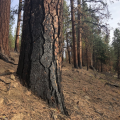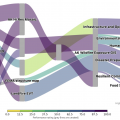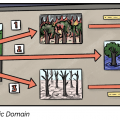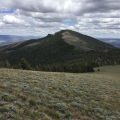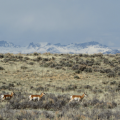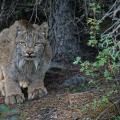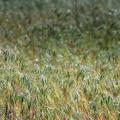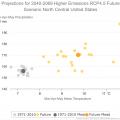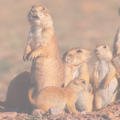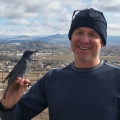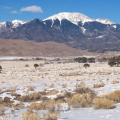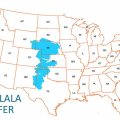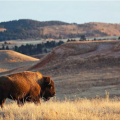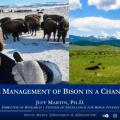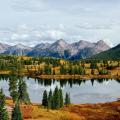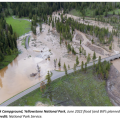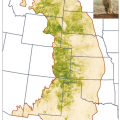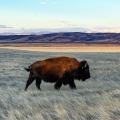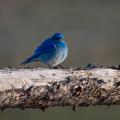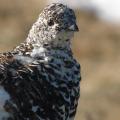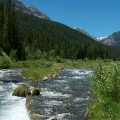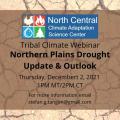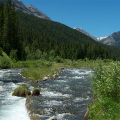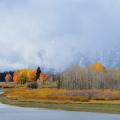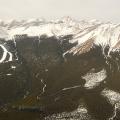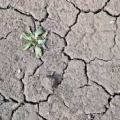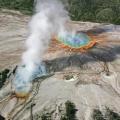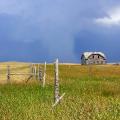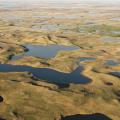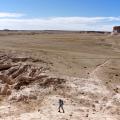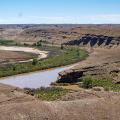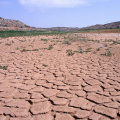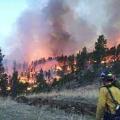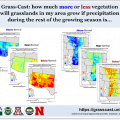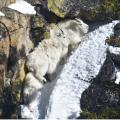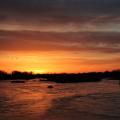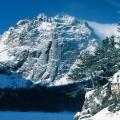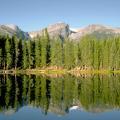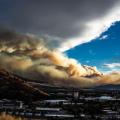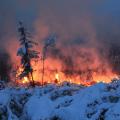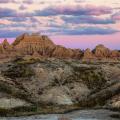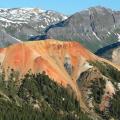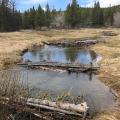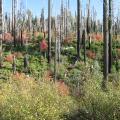Webinars
Integrating Seasonal Dynamics into Risk-Informed Wildfire Planning
|
Jamie Peeler, research scientist, University of Montana
From Adaptation Planning to Implementation in Aaniiih Nakoda Nations: Challenges & Lessons Learned
|
Dennis Longknife Jr., Climate Change Coordinator, Fort Belknap Indian Community
CANCELLED: Shared societal benefit assessment as a path toward improving data collection and sharing in the Arctic region
|
Sandra Starkweather, CIRES/NOAA Physical Sciences Division
Ecological Scenarios: Embracing Ecological Uncertainty for Climate Change Adaptation
|
Kyra Clark-Wolf, NC CASC, CIRES, University of Colorado Boulder
Exploring the carbon effects of forest transformation and exotic annual grassland restoration in the North Central United States
|
Toby Maxwell, Boise State University/Oregon State University, Chelsea Nagy, University of Colorado Boulder
Assessing the Future of Sagebrush Ecosystems to Inform Climate Adaptation
|
John Bradford, Research Ecologist, US Geological Survey, Martin Holdrege, ORISE Postdoctoral Research & USGS Affiliate, Daniel Schlaepfer, Senior Scientist Northern Arizona University & USGS Affiliate
Defend and Grow the Core: Implementing the Sagebrush Conservation Design to Save a Biome
|
Geoff Bedrosian, Sagebrush Science Coordinator, US Fish and Wildlife Service
Dreams from the Anthropocene
|
Assessment of Current and Future Conditions of Canada Lynx in the Contiguous US
|
Jim Zelenak, U.S. Fish and Wildlife Service, Helena, Montana, John Guinotte, U.S. Fish and Wildlife Service, Lakewood, Colorado
Modeling invasive species considering climate to inform management activities
|
Catherine Jarnevich, USGS Fort Collins Science Center
ClimateToolbox.ORG: A Discussion of Climate Applications to Support Quantitative Climate Change Impact Assessment and Scenario Planning
|
Katherine Hegewisch, University of California Merced
Homes on the Range
|
Conservation and management challenges for a poorly understood, declining species in a changing landscape
|
Scott Somershoe, US Fish & Wildlife Service
The Art and Science of Developing a Menu of Climate Change Adaptation Actions for Managing Wildlife and Ecosystems
|
Stephen Handler, USDA Forest Service and Northern Institute of Applied Climate Science, Dr. Benjamin Zuckerberg, University of Wisconsin-Madison, Jacy Bernath-Plaisted, University of Wisconsin-Madison
Uncharted Waters: Incorporating Farmer and Rancher Perspectives to Address Systemic Water Shortages in the Colorado River Basin
|
Dr. Drew Bennett and Max Lewis, Haub School of Environment & Natural Resources, University of Wyoming
Climate Responses and Adaptation in Heterogeneous Landscapes
|
Dr. Meagan Oldfather, NC CASC and USGS
The Ogallala Data Directory: A Tool for Ogallala Aquifer Region Researchers and Decision-Makers
|
Dr. Caitlin Rottler, South Central Climate Adaptation Science Center
Grasslands Synthesis Project: Findings and Next Steps
|
Dr. Christine Miller Hesed and Dr. Heather Yocum, NC CASC
Social Science is RAD
|
Katie Clifford, Western Water Assessment, Amanda Cravens, USGS Forest and Rangeland Ecosystem Science Center, Corrie Knapp, University of Wyoming
Building A Climate Adaptation Plan for the Sicangu Lakota (Rosebud Sioux)
|
Philimon Two Eagle, Sicangu Lakota Treaty Council, Paula Wopilawan Antoine, Sicangu Oyate Land Office, Robin O'Malley, Robin O'Malley, LLC (formerly USGS Director of the NC CASC)
The Increasing Role of Drought in Ecological Transformation
|
Wynne Moss, USGS Northern Rocky Mountain Science Center
Fires of Unusual Size: Future of Extreme Wildfires in the Continental United States
|
Dr. Jilmarie Stephens, CU Boulder
Sustainable Management of Bison in a Changing World
|
Dr. Jeff Martin, West River Research and Extension Center
Rapid Ecological Change & Transformation Across the Middle and Southern Rockies During a Previous Climate Warming
|
Shelley Crausbay, US Forest Service
The Challenge of Planning for Extremes in Natural and Cultural Resources
|
Dr. William Travis, NC CASC
Participatory Climate Change Scenario Planning: A Standard Approach, Application Guidelines, and Management Outcomes from a Decade of Research and Development with US National Parks
|
Dr. Brian Miller, USGS, Dr. Gregor Schuurman, NPS
Identifying Potential Landscapes for Conservation Across the Central Grasslands of North America: Integrating Keystone Species, Land Use, and Climate Change
|
Ana Davidson, Colorado State University
Climate Solutions Days 2022
In April 2022, the NC CASC celebrated Earth Week by hosting Climate Solutions Days, an à la carte offering of presentations, workshops and trainings scheduled throughout the
|
Tools for developing reproducible climate futures for resource planning
|
David Lawrence, National Park Service
North Central Regional Invasive Species and Climate Change (NC RISCC) to Host Science Integration Workshop

|
Developing Climate Information for US Fish and Wildlife Service Species Status Assessments Using the Climate Toolbox
|
Katherine Hegewisch, University of California Merced, John Guinotte, Alexandra Kasdin and Aimee Crittendon, U.S. Fish and Wildlife Service
Setting habitat protection and restoration priorities in a warming world: Lessons from Wyoming
|
Molly Cross, Wildlife Conservation Society
North Central Tribal Drought Webinar December 2021
|
Crystal Stiles, NIDIS, Doug Luck, NOAA, Nathan Edwards, South Dakota State University
NC CASC Webinar Series Webinar: Setting habitat protection and restoration priorities in a warming world: Lessons from Wyoming
Please join us for the NC CASC webinar on Thursday, December 9, 2021, 11a -12p MDT: "Setting habitat protection and restoration priorities in a warming world: Lessons from Wyomin
|
Molly Cross, Wildlife Conservation Society, Paul Dey, Wyoming Game & Fish Department
Forest impacts on snow water resources: management and climate adaptation possibilities
|
Dr. Keith Musselman, Institute of Arctic and Alpine Research, University of Colorado Boulder
North Central Tribal Drought Webinar September 2021
|
Doug Kluck, NOAA, Mark Junker, Sac and Fox of MO in NE & KS, Crystal Stiles, NOAA-NIDIS
Joint Stakeholder Committee (JSC) Listening Session on Grasslands
The NC CASC and USDA Northern Plains Climate Hub will hold a series of topic-based listening sessions with the Joint Stakeholder Committee (JSC) and their team members.



